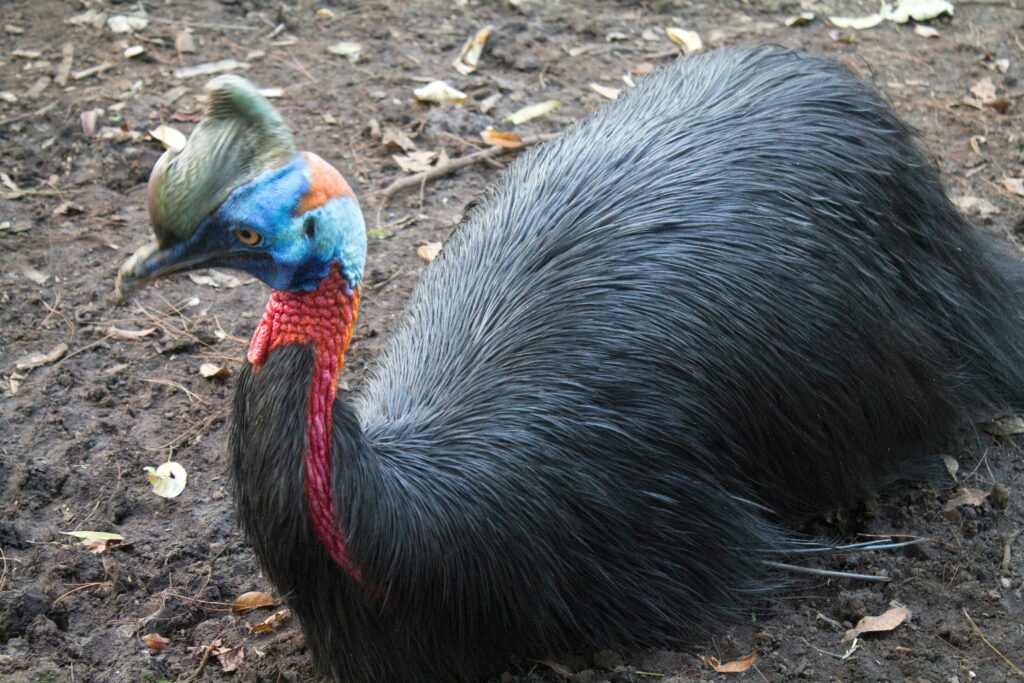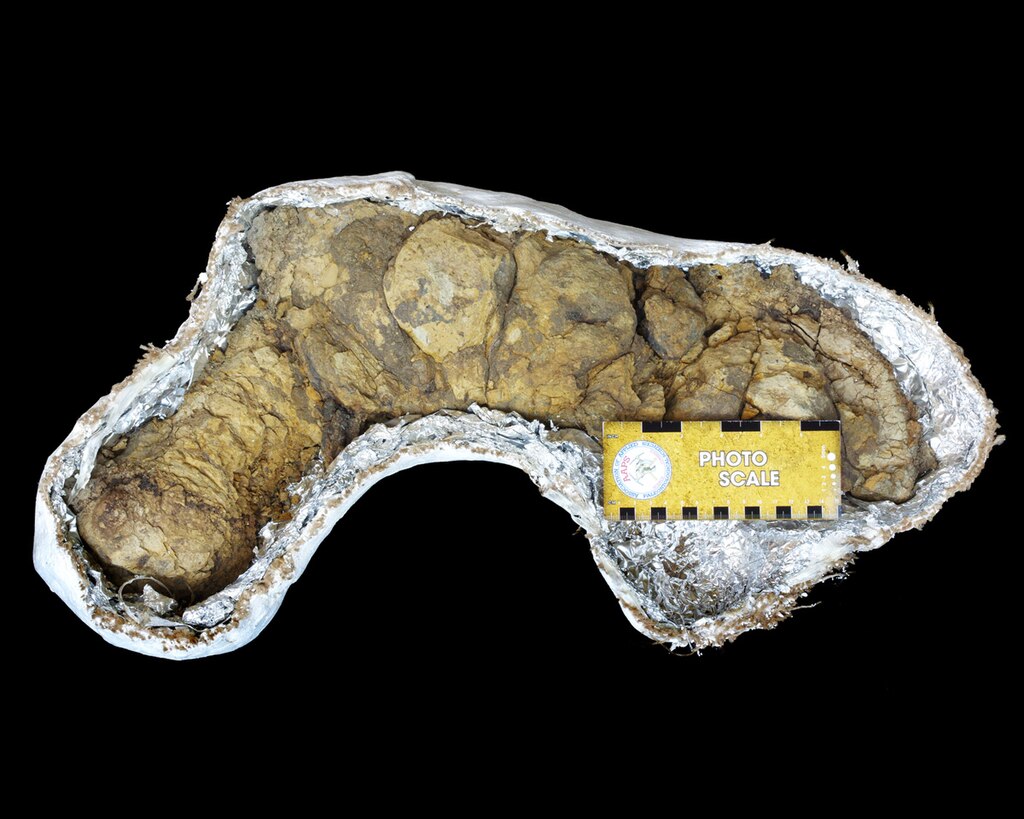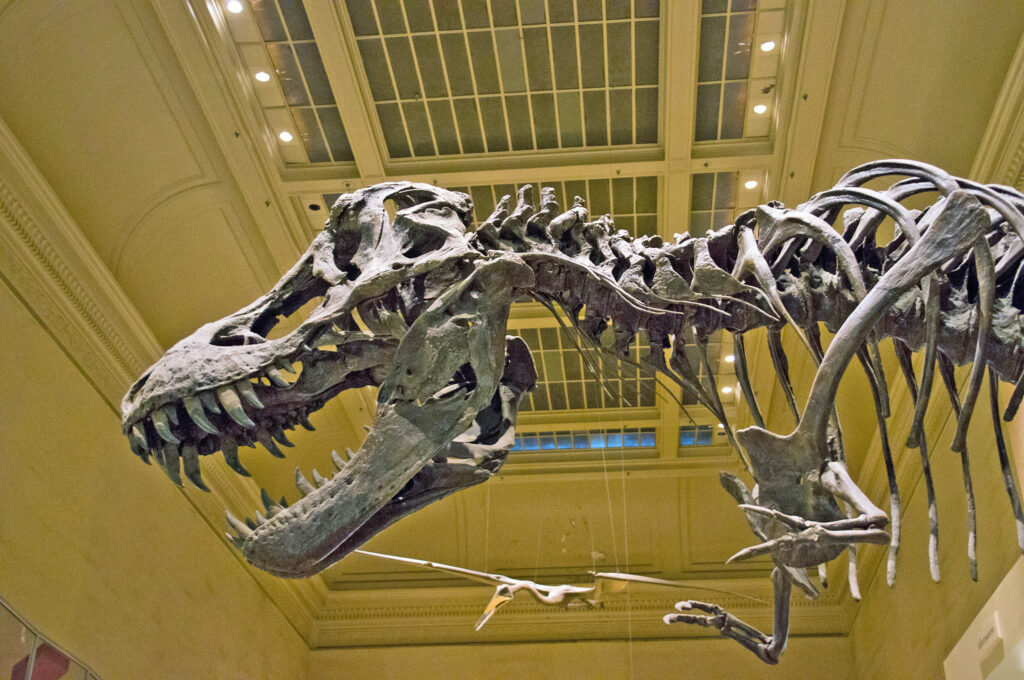Imagine walking through the dense rainforests of Australia and suddenly encountering a creature that seems to have stepped directly out of the Jurassic period. With its razor-sharp claws, towering height, and bone-crushing kicks, the cassowary stands as nature’s most convincing proof that dinosaurs never truly disappeared. This remarkable bird carries the genetic blueprint of ancient giants, displaying behaviors and physical traits that would make even the most fearsome raptors seem familiar.
The Living Fossil Among Us
The cassowary represents one of the most extraordinary examples of evolutionary continuity on our planet. These magnificent birds belong to a group called ratites, which diverged from other bird lineages approximately 60 million years ago, shortly after the mass extinction event that wiped out non-avian dinosaurs. Their DNA tells a story that spans millions of years, carrying genetic markers that link them directly to their prehistoric ancestors.
What makes cassowaries truly special is their resistance to evolutionary change. Unlike many species that have adapted dramatically over millennia, these birds have maintained their primitive characteristics with remarkable consistency. Their bone structure, muscle composition, and even their digestive systems mirror those of theropod dinosaurs more closely than any other living creature.
Scientists have discovered that cassowaries possess hollow bones, just like their dinosaur predecessors, which helps explain their surprising agility despite their massive size. This ancient engineering marvel allows them to move through dense vegetation with an ease that would be impossible for similarly sized mammals.
Prehistoric Appearance That Commands Respect
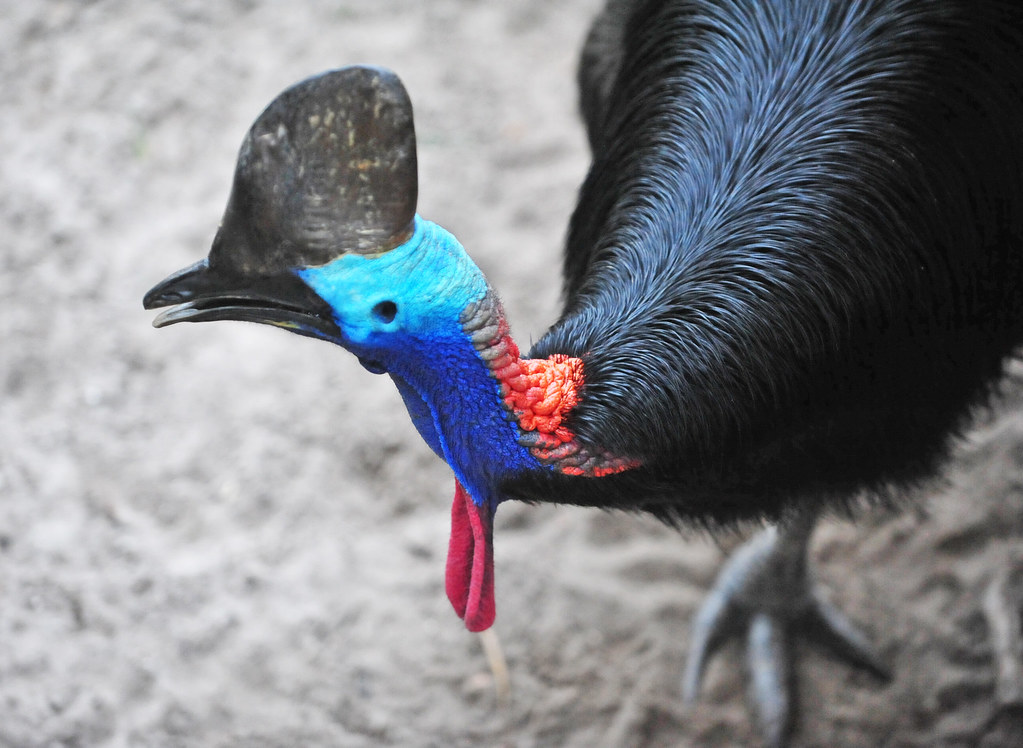
Standing up to six feet tall and weighing as much as 130 pounds, the cassowary’s appearance is nothing short of intimidating. Their most striking feature is undoubtedly the casque – a bony helmet-like structure that crowns their head like a prehistoric crown. This remarkable adaptation serves multiple purposes, from protecting their skull during high-speed chases through dense jungles to potentially helping them detect infrasound frequencies.
The bird’s glossy black plumage appears almost reptilian in certain lighting conditions, while their neck displays vivid blues and purples that seem to pulse with otherworldly energy. These colors aren’t just for show – they serve as warning signals to potential threats, much like the bright coloration found in many dangerous reptiles.
Their eyes, positioned on the sides of their head like those of many dinosaurs, provide them with an almost 360-degree field of vision. This prehistoric arrangement gives them an advantage that modern predators rarely possess – the ability to detect threats from virtually any direction without turning their heads.
Deadly Weapons Hidden in Plain Sight
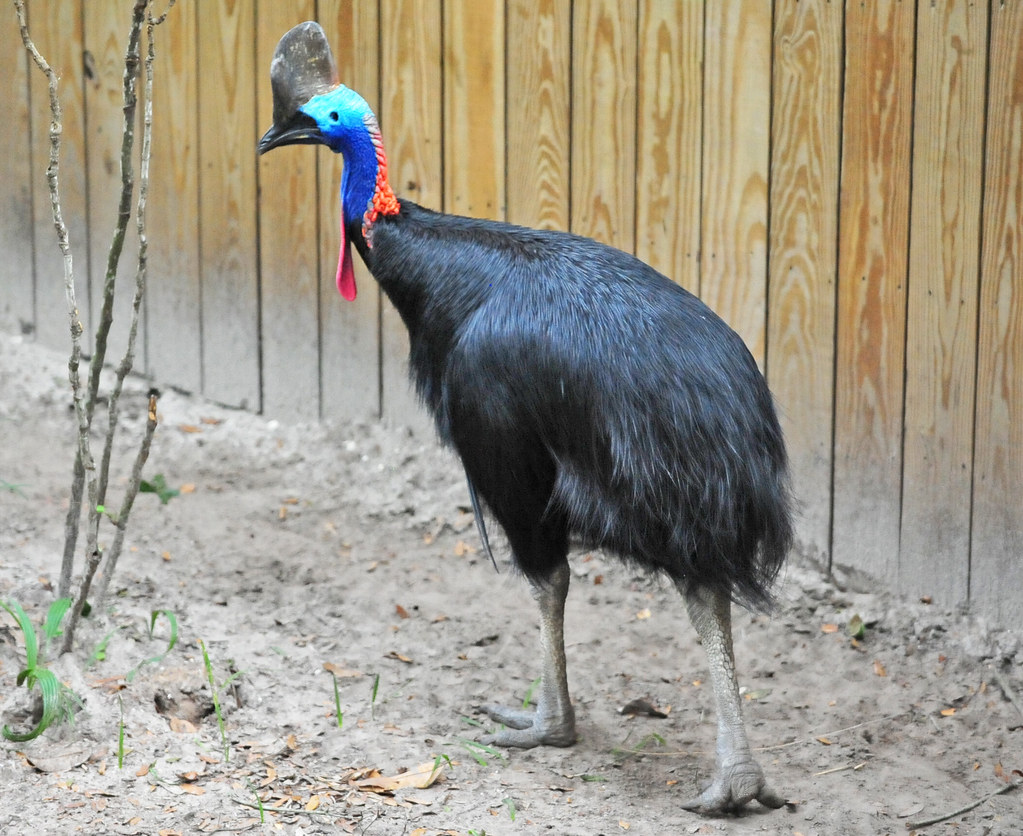
The cassowary’s most terrifying feature isn’t immediately visible to the casual observer – it’s hidden in their feet. Each foot contains a dagger-like claw that can grow up to five inches long, sharp enough to slice through bone, and capable of delivering devastating kicks with over 2,000 pounds of force per square inch. This weapon system is remarkably similar to the killing claws found on famous dinosaurs like Deinonychus and Velociraptor.
Unlike the curved talons of birds of prey, the cassowary’s claws are straight and blade-like, designed for maximum penetration rather than grasping. When threatened, these birds can deliver lightning-fast kicks that have been known to be fatal to humans, earning them the title of “world’s most dangerous bird.”
The positioning of these claws on their powerful legs creates a weapon system that would make any predator think twice. Combined with their ability to run at speeds up to 30 miles per hour, cassowaries become living missiles capable of inflicting serious damage to anything that threatens them.
Ancient Hunting and Feeding Behaviors
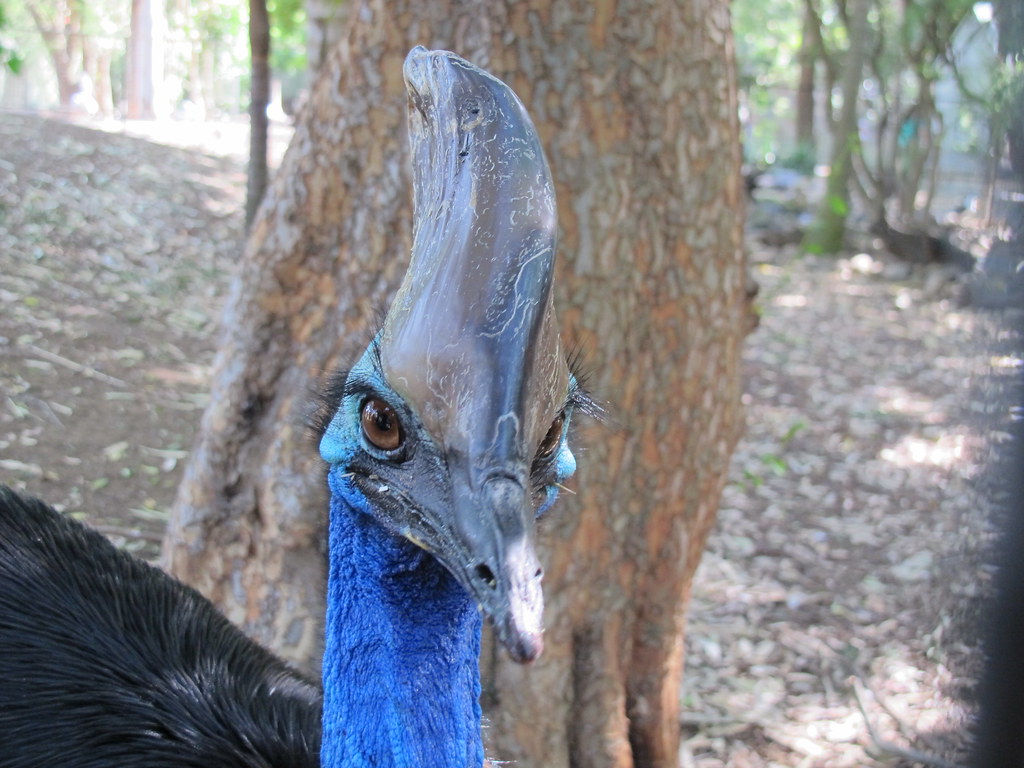
The cassowary’s feeding behavior provides fascinating insights into how their dinosaur ancestors might have lived. These birds are primarily frugivorous, consuming massive quantities of fruit that would be toxic to most other animals. Their powerful digestive system can process fruits containing compounds that would poison other creatures, a trait that likely helped their ancestors survive in diverse prehistoric ecosystems.
What’s particularly remarkable is their role as “ecosystem engineers” – a behavior that mirrors what scientists believe many large dinosaurs did millions of years ago. By consuming fruits and depositing seeds throughout the rainforest, cassowaries shape entire landscapes, creating the very environment they depend on for survival.
Their feeding strategy also includes occasional consumption of small animals, fungi, and insects, displaying the opportunistic omnivory that characterized many theropod dinosaurs. This dietary flexibility may have been one of the key factors that allowed their lineage to survive the great extinction event.
Bone Structure That Defies Modern Bird Evolution
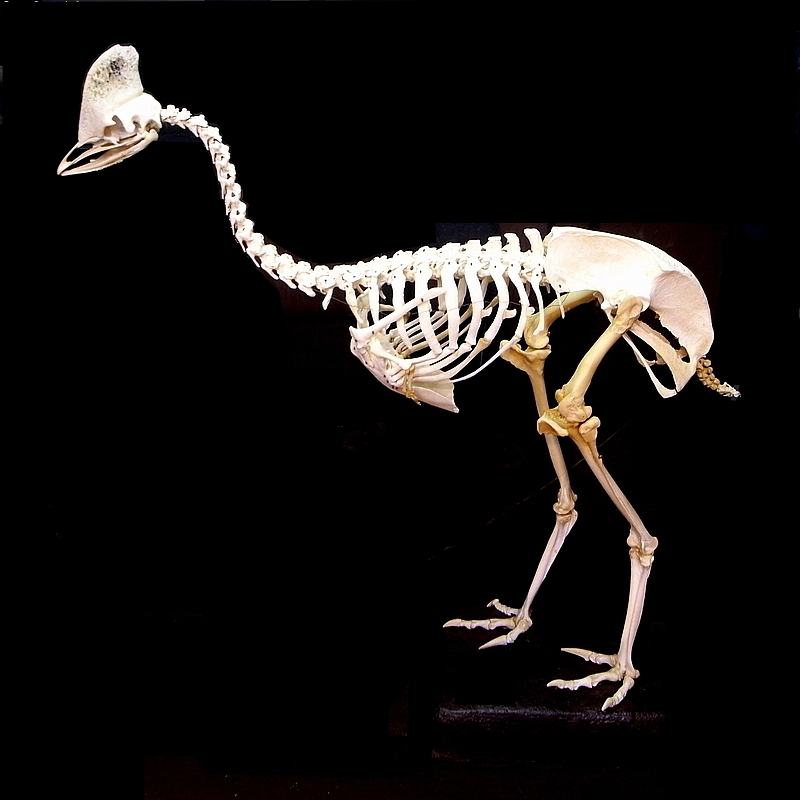
Examining a cassowary’s skeleton reveals a creature that seems frozen in evolutionary time. Their bones are remarkably similar to those found in dinosaur fossils, with thick, robust structures that can withstand tremendous impacts. Unlike the lightweight, hollow bones of most modern birds, cassowary bones retain much of their primitive density and strength.
The bird’s sternum lacks the prominent keel found in flying birds, instead featuring a flat, broad structure that more closely resembles the chest bones of ground-dwelling dinosaurs. This anatomical feature supports their powerful leg muscles, which make up nearly 30% of their total body weight – a proportion that would have been typical among large theropods.
Their vertebrae and pelvic structure show clear connections to dinosaur anatomy, with reinforced joints and muscle attachment points that indicate a lifestyle built around powerful, ground-based locomotion. These features have remained virtually unchanged for millions of years, making cassowaries living textbooks of prehistoric anatomy.
Parenting Behaviors From the Mesozoic Era
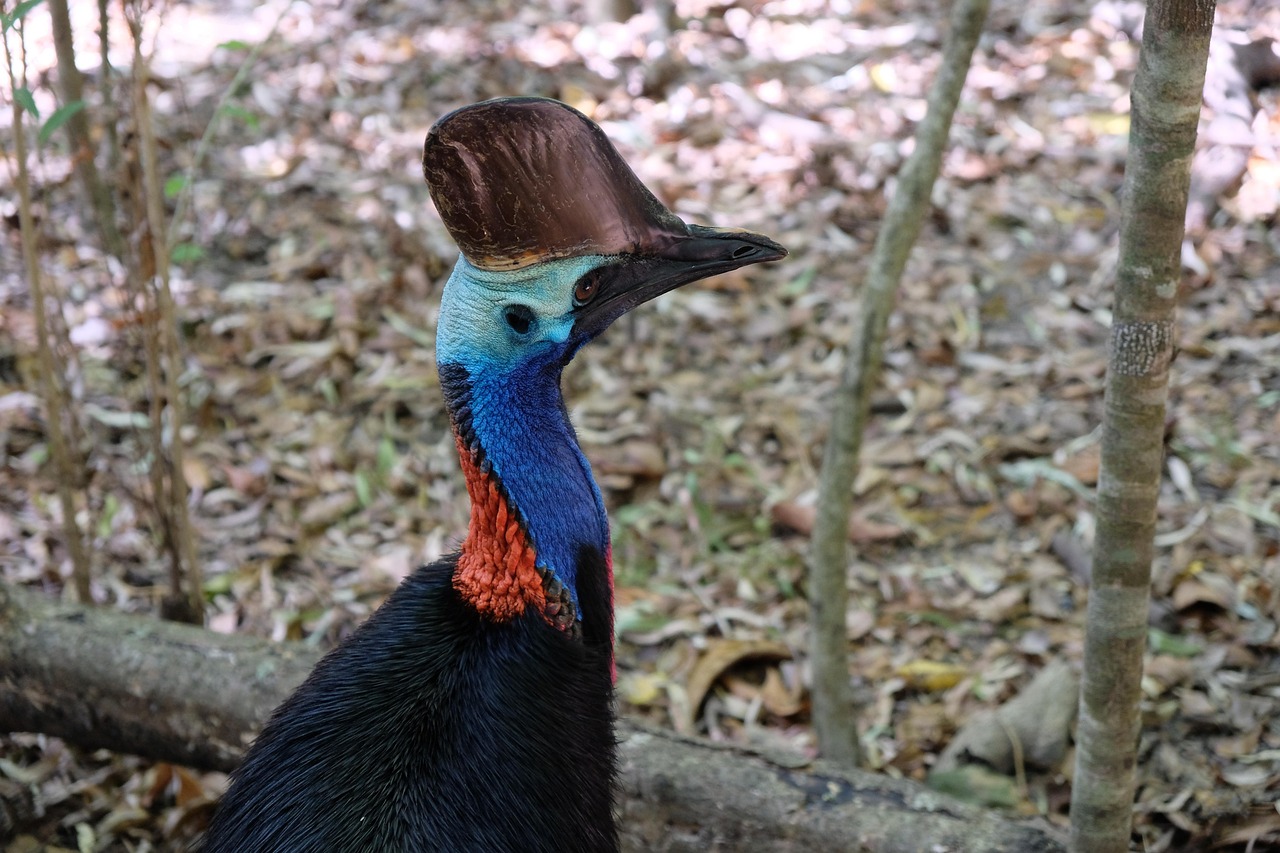
Perhaps one of the most fascinating aspects of cassowary behavior is their unique approach to parenting, which mirrors what scientists believe was common among dinosaurs. In a reversal of typical bird behavior, male cassowaries take complete responsibility for incubating eggs and raising their young, a practice that fossil evidence suggests was common among many dinosaur species.
The male cassowary sits on the nest for approximately 50 days, rarely leaving except to briefly feed. During this time, he can lose up to 20% of his body weight, demonstrating the same level of dedication that scientists believe characterized dinosaur fathers. This behavior pattern has been observed in very few modern bird species, making it a precious link to prehistoric parenting strategies.
Once the chicks hatch, the father continues to care for them for up to nine months, teaching them essential survival skills and protecting them from predators. This extended parental care period is remarkably similar to what researchers believe occurred among dinosaur families, where young remained with their parents for extended periods to learn complex behaviors.
The Velocity and Power of Prehistoric Predators
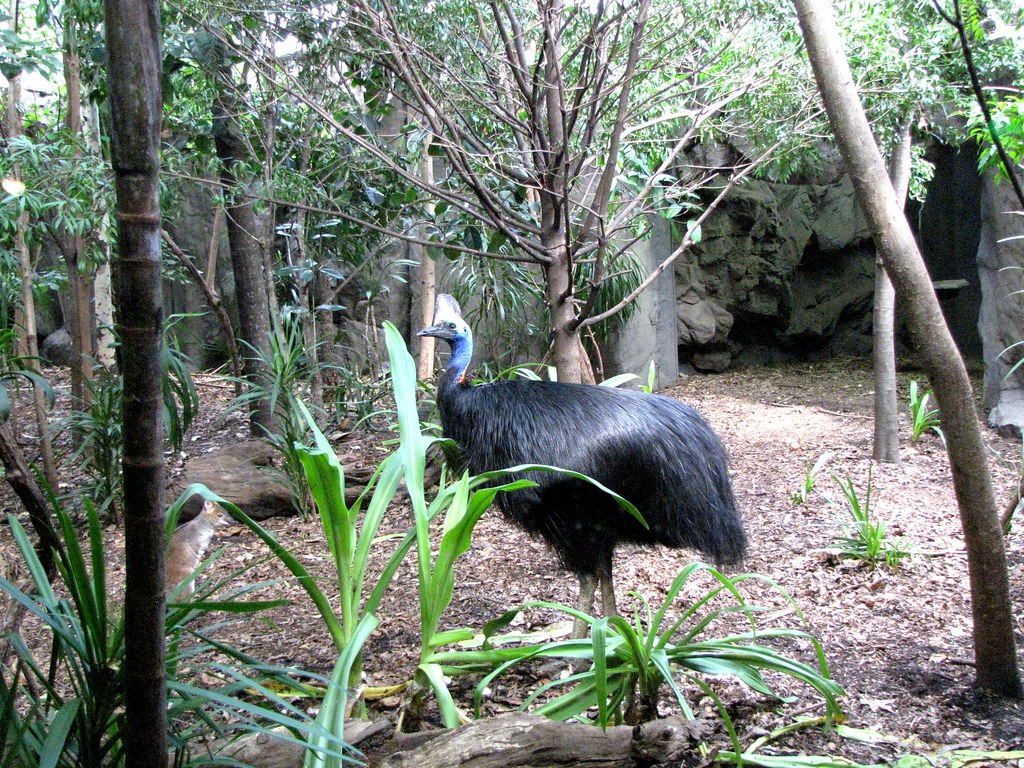
When a cassowary moves at full speed, observers get a glimpse of what it might have been like to encounter a running dinosaur. These birds can accelerate from zero to 30 miles per hour in just a few seconds, using a running gait that’s strikingly similar to what computer models predict for medium-sized theropods. Their powerful legs pump with mechanical precision, each stride covering up to eight feet.
The bird’s ability to navigate dense jungle at high speed demonstrates the same kind of spatial awareness and agility that would have made dinosaurs such effective predators. They can leap over obstacles up to five feet high and make sharp turns without losing momentum, skills that would have been essential for survival in prehistoric environments.
What’s particularly impressive is their stamina – cassowaries can maintain high speeds for extended periods, suggesting an efficient cardiovascular system that may have been inherited from their dinosaur ancestors. This endurance, combined with their size and weaponry, makes them formidable opponents for any creature foolish enough to challenge them.
Sounds From the Prehistoric Past
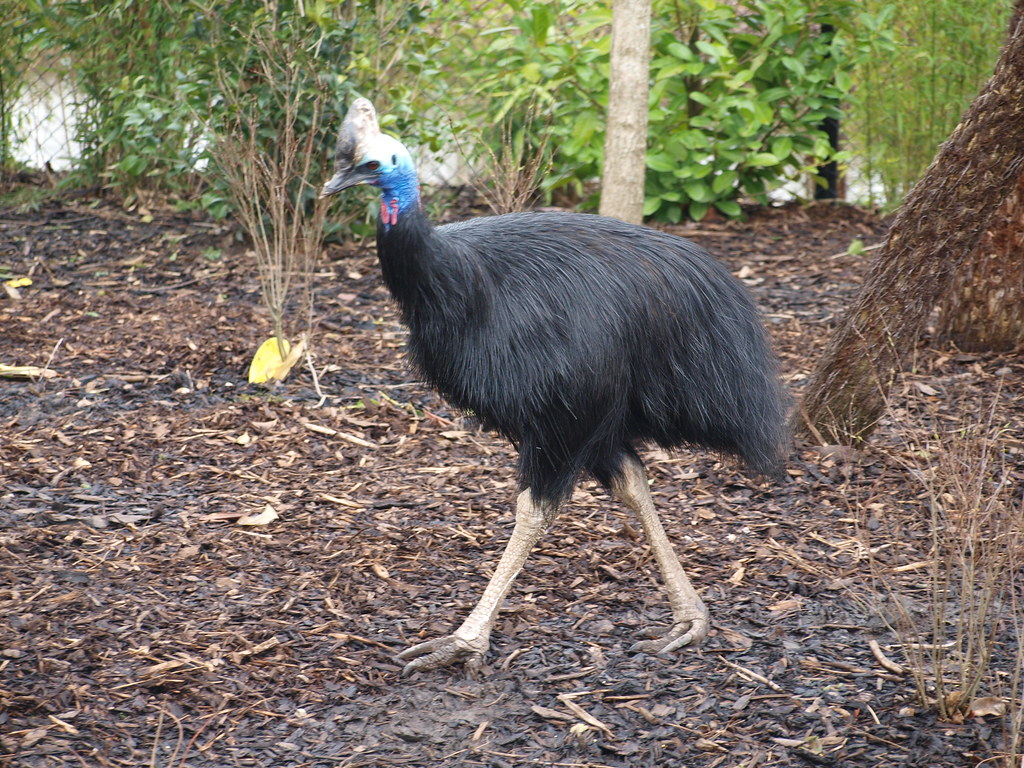
The cassowary’s vocalizations provide another eerie connection to the prehistoric world. These birds produce deep, booming calls that can be heard from miles away, using infrasound frequencies that are felt as much as heard. Scientists believe this type of long-distance communication was likely common among large dinosaurs, who would have needed to communicate across vast territories.
The bird’s throat structure contains specialized pouches that act as resonating chambers, similar to the vocal apparatus scientists have reconstructed for certain dinosaur species. When a cassowary calls, the sound seems to come from everywhere at once, creating an almost supernatural effect that would have been perfect for prehistoric environments where visibility was limited.
These low-frequency calls can travel through dense vegetation and over long distances, allowing cassowaries to maintain contact with their mates and offspring even when separated by miles of jungle. This communication system represents one of the most direct links we have to understanding how dinosaurs might have “talked” to each other millions of years ago.
Territorial Behavior That Echoes Ancient Conflicts
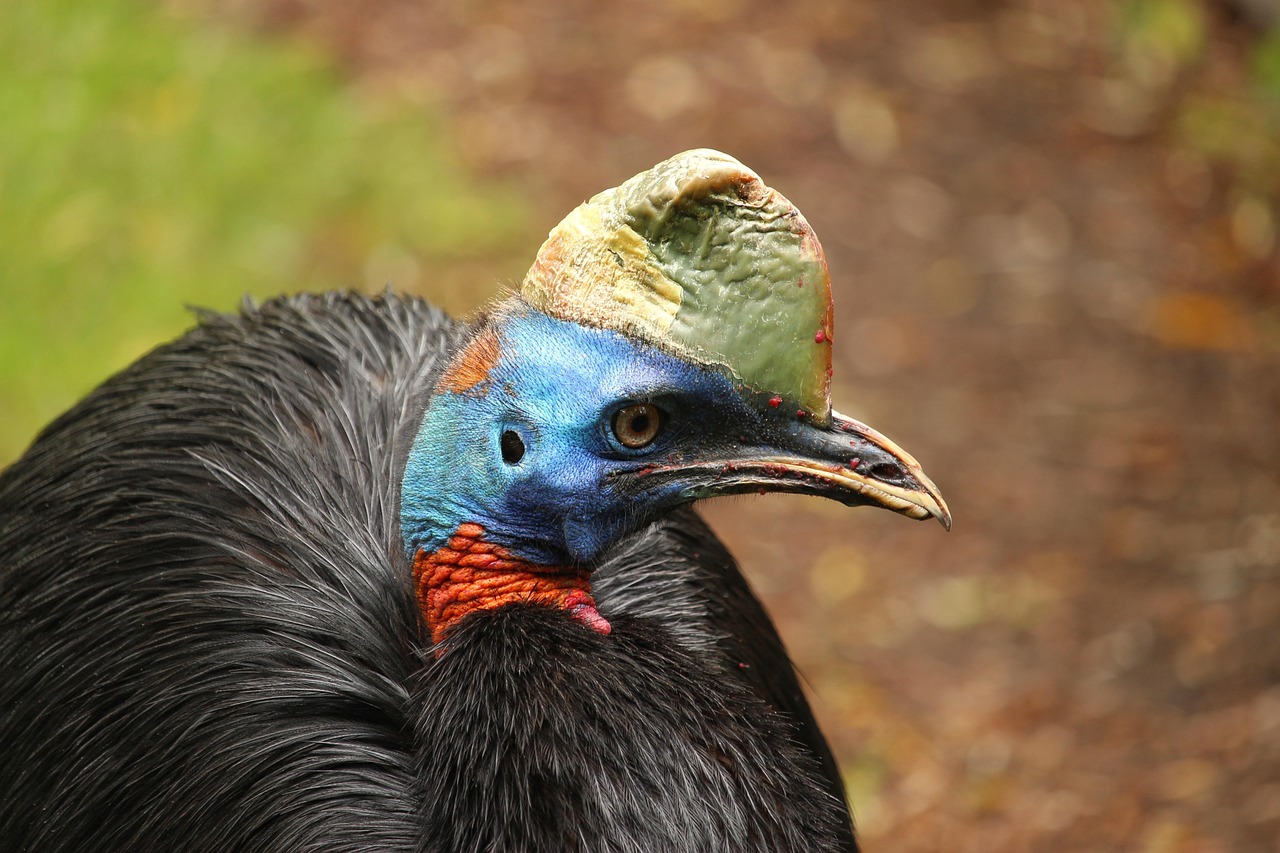
Cassowaries defend their territories with an intensity that would have been familiar to any large predatory dinosaur. These birds maintain home ranges that can extend over several square miles, and they’re willing to fight viciously to protect their domain. Their territorial displays involve raising their casque, fluffing their feathers, and producing intimidating vocalizations that can be heard from great distances.
When territorial boundaries are crossed, cassowaries don’t hesitate to engage in physical confrontations that can result in serious injuries. They use their powerful legs to deliver devastating kicks, while their sharp claws inflict wounds that can be fatal to opponents. This aggressive territoriality is believed to have been a key survival strategy among dinosaurs competing for limited resources.
The way cassowaries mark and patrol their territories also shows similarities to reconstructed dinosaur behaviors. They create well-worn paths through their domain, regularly visiting key locations like water sources and fruit trees, and they remember the locations of threats and resources with remarkable accuracy.
Evolutionary Adaptations That Time Forgot
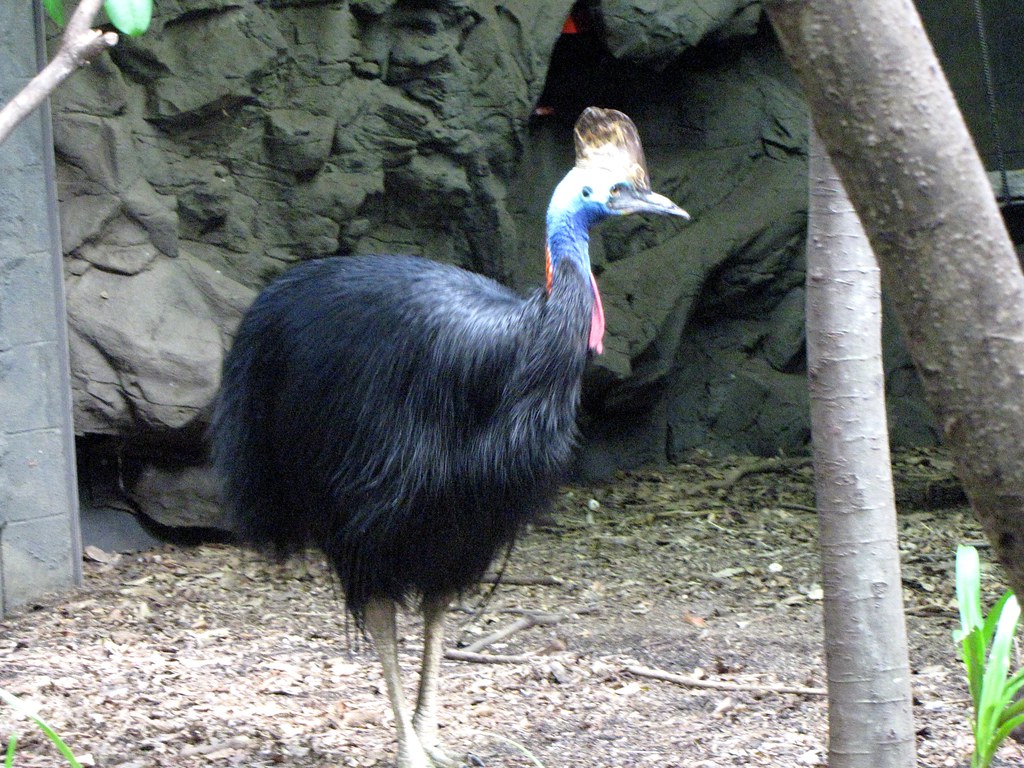
The cassowary’s immune system represents another fascinating link to prehistoric life. These birds possess resistance to diseases and toxins that would be deadly to most modern animals, suggesting they’ve retained ancient immunological defenses that helped their ancestors survive in harsh prehistoric environments. Their ability to consume fruits that are poisonous to other animals demonstrates metabolic processes that may have been common among dinosaurs.
Their cardiovascular system also shows remarkable efficiency, with a heart that can pump blood effectively to support their massive size and explosive bursts of speed. This physiological adaptation is particularly impressive when considering the bird’s ability to maintain high activity levels in the humid, oxygen-poor environment of dense rainforests.
Even their feather structure differs significantly from modern birds, with a primitive arrangement that provides insulation and protection rather than flight capability. These proto-feathers are remarkably similar to the feathered structures found on some dinosaur fossils, offering physical evidence of the evolutionary connection between these creatures and their prehistoric ancestors.
Habitat Preferences That Mirror Ancient Ecosystems
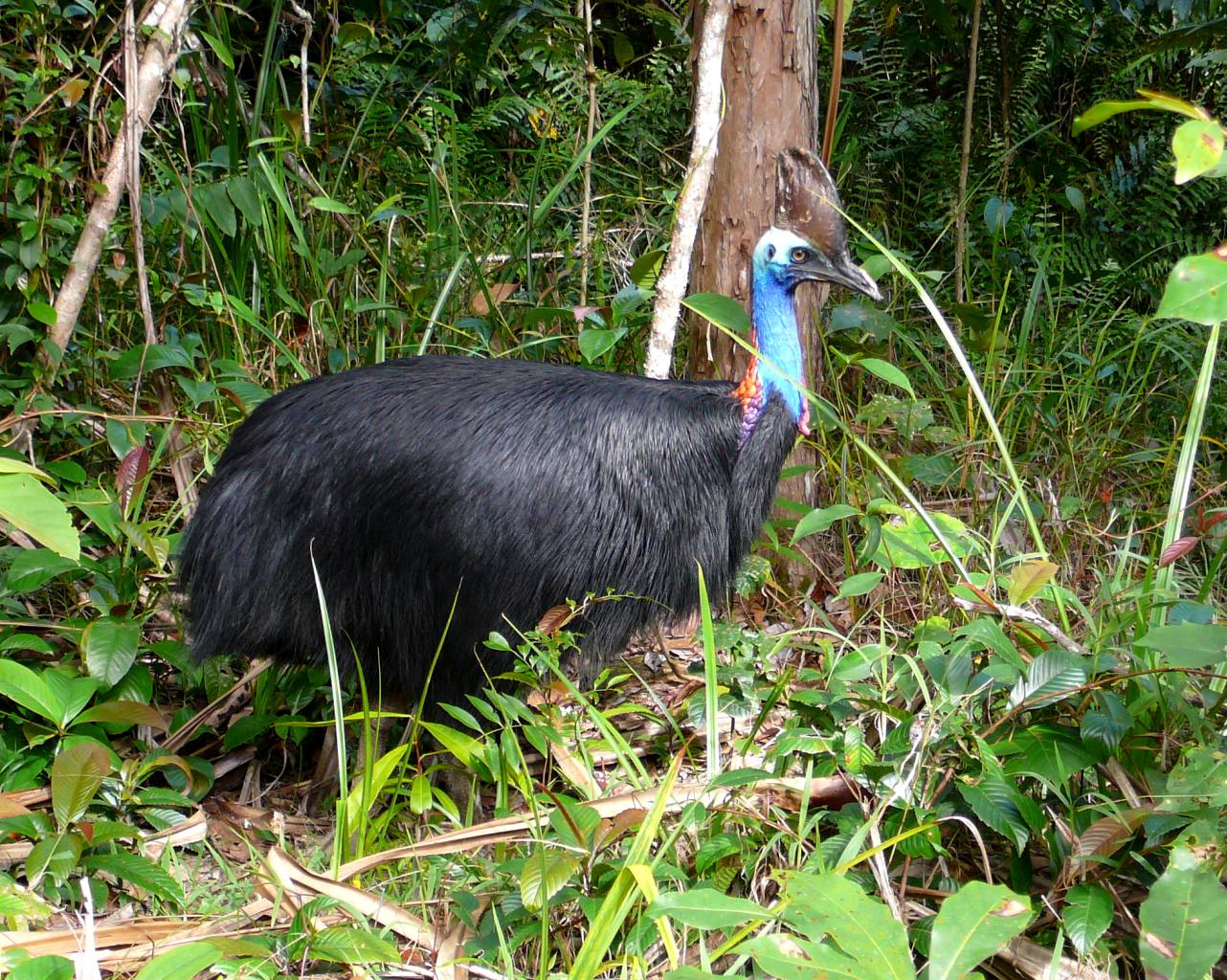
The environments where cassowaries thrive today provide clues about the types of ecosystems that supported large dinosaurs millions of years ago. These birds prefer dense, humid rainforests with abundant fruit trees and water sources – conditions that would have been common during the Mesozoic Era when dinosaurs dominated the Earth.
Their role as seed dispersers has shaped the very forests they inhabit, creating a symbiotic relationship between the birds and their environment that may have been typical of dinosaur ecosystems. By consuming fruits and depositing seeds throughout their territory, cassowaries maintain the biodiversity that supports their continued survival.
The bird’s preference for specific microclimates within the rainforest also demonstrates an understanding of environmental conditions that would have been crucial for dinosaur survival. They seek out areas with consistent temperature and humidity levels, avoiding extremes that could stress their prehistoric physiology.
DNA Evidence of Dinosaur Heritage
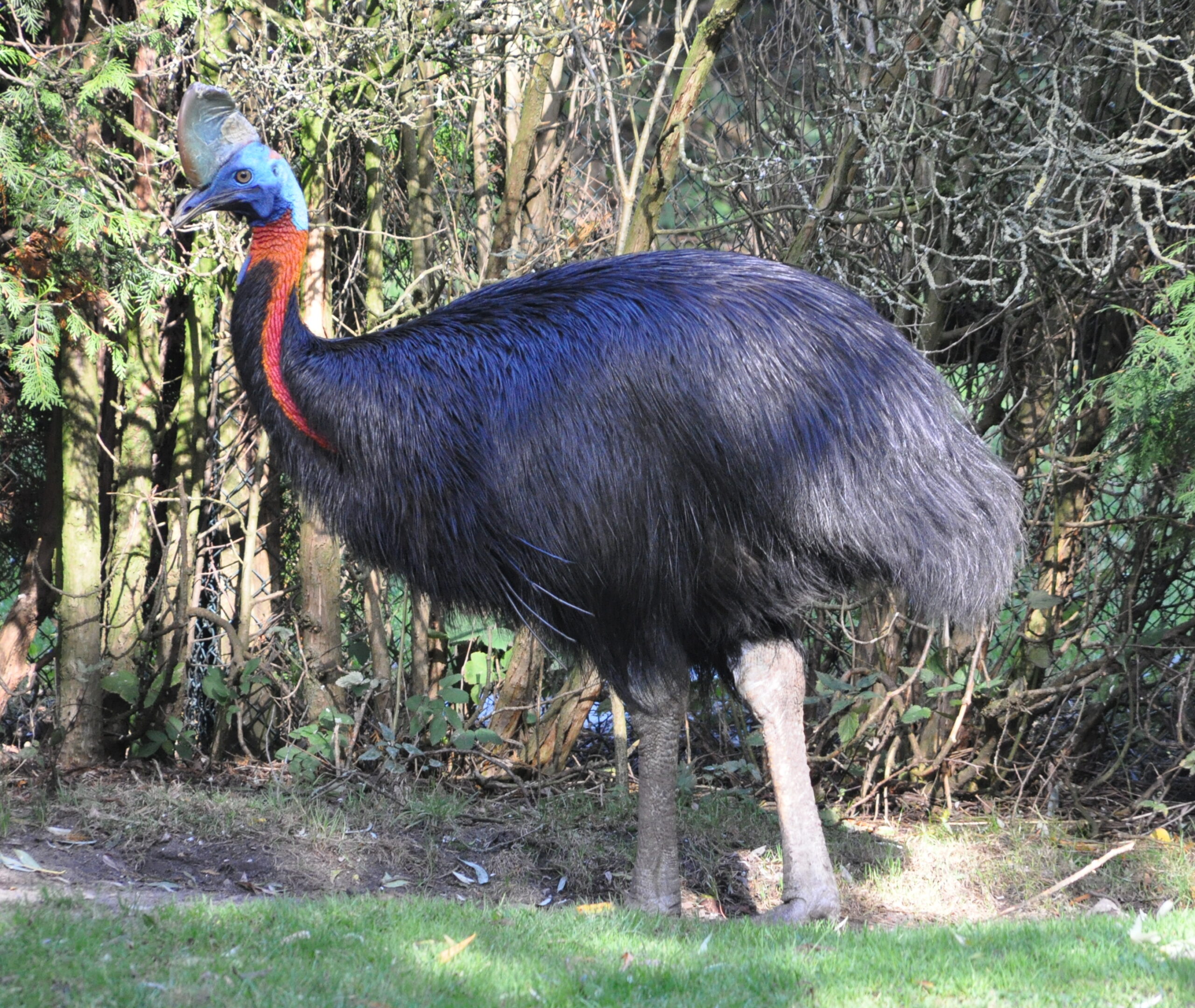
Modern genetic analysis has revealed that cassowaries carry DNA sequences that are remarkably similar to those found in dinosaur fossils. Scientists have identified specific genes that control the development of claws, bone structure, and muscle arrangement that are virtually identical to those predicted for theropod dinosaurs. This genetic evidence provides the strongest scientific support for the bird’s dinosaur heritage.
The bird’s chromosomal structure also shows characteristics that are considered primitive among modern birds, retaining features that were likely common among their dinosaur ancestors. These genetic markers have remained stable for millions of years, suggesting that cassowaries represent a successful evolutionary strategy that didn’t require significant modification to survive.
Recent research has also revealed that cassowaries share specific protein sequences with dinosaur collagen extracted from fossils, providing direct molecular evidence of their connection to prehistoric life. This discovery has revolutionized our understanding of evolutionary continuity and demonstrated that dinosaurs truly never went extinct – they simply evolved into birds.
Conservation Challenges for a Living Dinosaur
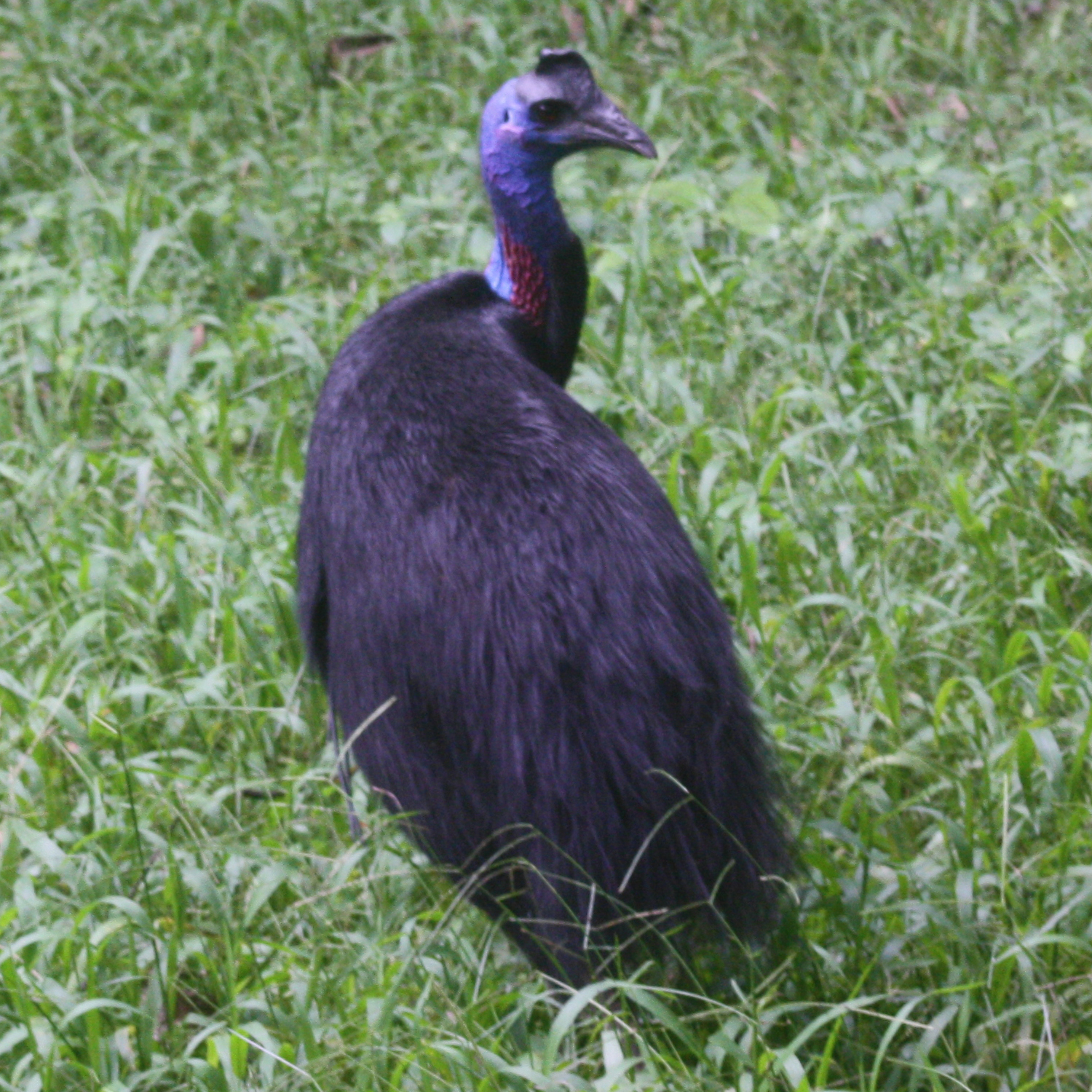
The survival of cassowaries in the modern world faces challenges that their dinosaur ancestors never had to confront. Habitat destruction, climate change, and human encroachment have reduced their populations to dangerously low levels in many areas. These birds require vast territories to maintain healthy populations, making them particularly vulnerable to habitat fragmentation.
Their slow reproductive rate, inherited from their dinosaur ancestors, makes population recovery extremely difficult once numbers begin to decline. Female cassowaries typically lay only 3-5 eggs per year, and not all chicks survive to adulthood, meaning that even small increases in mortality can have devastating effects on local populations.
Conservation efforts for cassowaries represent our last chance to preserve a direct link to the prehistoric world. Protecting these remarkable birds isn’t just about saving a species – it’s about maintaining our connection to the ancient past and ensuring that future generations can witness what a living dinosaur looks like.
The Future of Our Prehistoric Connection
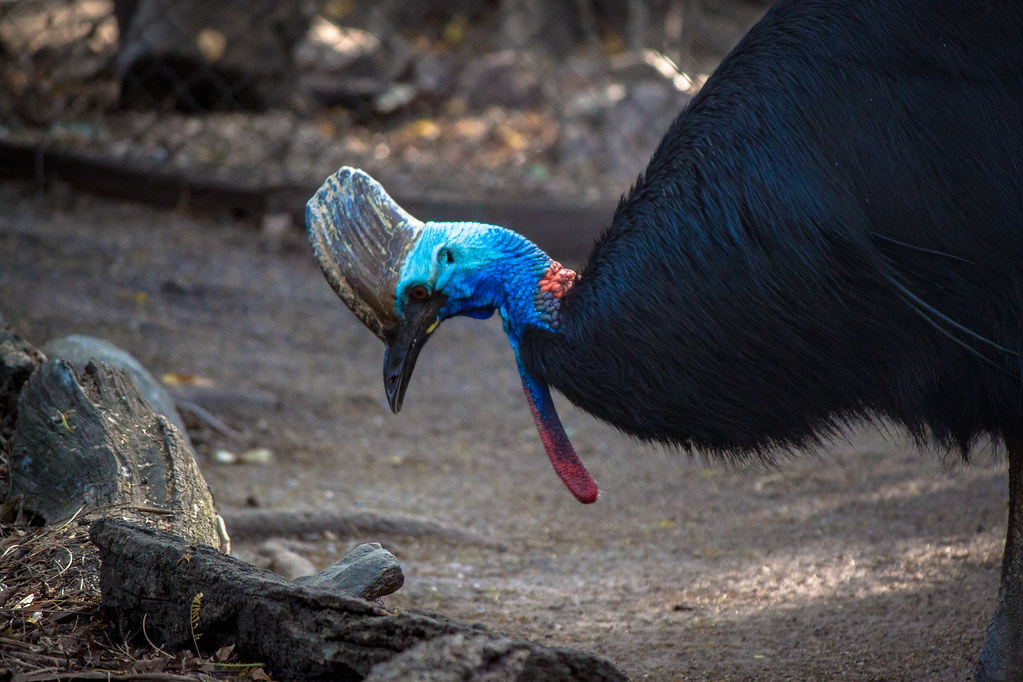
As we face an uncertain environmental future, cassowaries serve as both a window into the past and a predictor of what might come. Their ability to survive multiple extinction events demonstrates the resilience that will be crucial for species survival in our changing world. The traits that made them successful millions of years ago – adaptability, territorial awareness, and efficient resource use – remain relevant in today’s challenging environment.
Research into cassowary behavior and physiology continues to reveal new insights about dinosaur life, helping scientists understand how these ancient creatures lived, hunted, and survived. Each discovery adds another piece to the puzzle of prehistoric life, bringing us closer to understanding the true nature of the dinosaurs that once ruled our planet.
The cassowary’s story reminds us that the age of dinosaurs never truly ended – it simply transformed into something that continues to walk among us today. These remarkable birds carry within their genes, their behaviors, and their very existence the living proof that dinosaurs adapted, survived, and continue to thrive in our modern world.
Conclusion

Looking at a cassowary today is like peering through a window into the Mesozoic Era, witnessing behaviors and characteristics that connected these birds to their ancient heritage. Their survival represents one of evolution’s greatest success stories, proving that the right combination of adaptability and primitive effectiveness can overcome even the most catastrophic changes. In a world where countless species have vanished forever, the cassowary stands as a testament to the enduring power of prehistoric design. What other secrets might these living dinosaurs reveal about the ancient world that shaped our planet?

